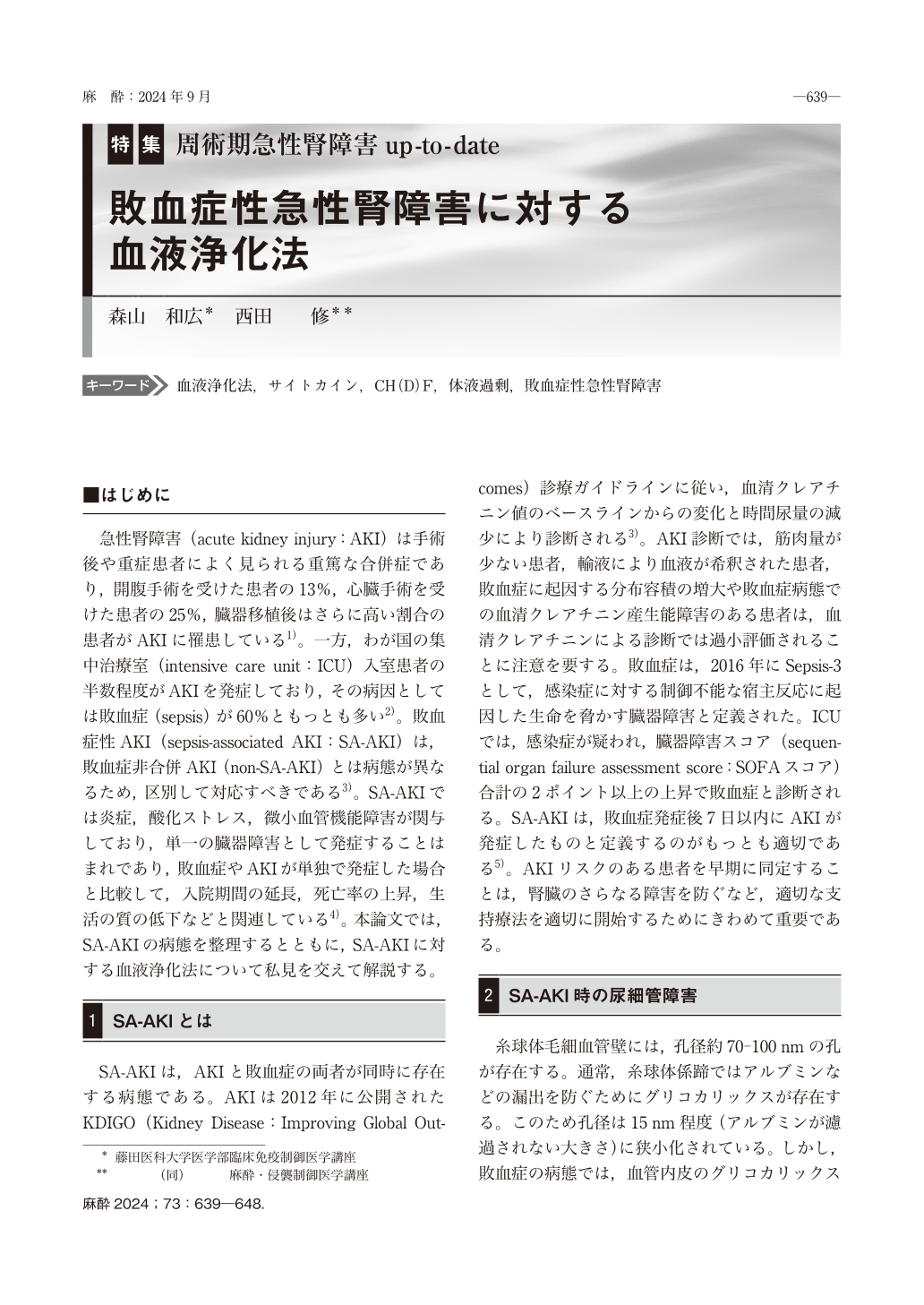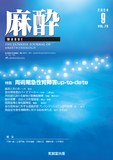Japanese
English
- 有料閲覧
- Abstract 文献概要
- 1ページ目 Look Inside
- 参考文献 Reference
はじめに
急性腎障害(acute kidney injury:AKI)は手術後や重症患者によく見られる重篤な合併症であり,開腹手術を受けた患者の13%,心臓手術を受けた患者の25%,臓器移植後はさらに高い割合の患者がAKIに罹患している1)。一方,わが国の集中治療室(intensive care unit:ICU)入室患者の半数程度がAKIを発症しており,その病因としては敗血症(sepsis)が60%ともっとも多い2)。敗血症性AKI(sepsis-associated AKI:SA-AKI)は,敗血症非合併AKI(non-SA-AKI)とは病態が異なるため,区別して対応すべきである3)。SA-AKIでは炎症,酸化ストレス,微小血管機能障害が関与しており,単一の臓器障害として発症することはまれであり,敗血症やAKIが単独で発症した場合と比較して,入院期間の延長,死亡率の上昇,生活の質の低下などと関連している4)。本論文では,SA-AKIの病態を整理するとともに,SA-AKIに対する血液浄化法について私見を交えて解説する。
Sepsis is life-threatening organ dysfunction caused by a dysregulated host response to infection. Sepsis-associated acute kidney injury(SA-AKI)is the most common ICU condition associated with increased morbidity and mortality. The pathogenesis of SA-AKI is characterized by renal hemodynamics in which microvascular and tubular functions are primarily affected by inflammation, rather than by structural renal changes. cytokine-adsorbing hemofilter, can thus be used as a countermeasure against inflammatory cytokines in SA-AKI. Kidney-protective treatment is also necessary, because mortality is high if sepsis is complicated by AKI. The concept of renal congestion is therefore important, and the optimal timing of CH(D)F for fluid overload and ultrafiltration rate is being studied. Blood-purification therapy for SA-AKI cannot improve a patient’s prognosis unless systemic management is conducted with an awareness of kidney protection rather than targeting the kidneys.

Copyright © 2024 KOKUSEIDO CO., LTD. All Rights Reserved.


